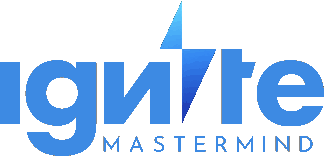These words are often used as synonyms. The terms are close, but they mean different things.
Think of an onion, with several layers inside each other. The AI concepts are like that. All machine learning is AI, but not all AI is machine learning. Let’s start peeling the onion from the top.
Artificial intelligence (AI) is a technology that helps machines mimic human intelligence. AI systems can see, learn, solve problems, make decisions, and so on.
That said, don’t confuse artificial intelligence with general artificial intelligence. Today’s narrow AI is good at specific tasks, but it lacks broad cognition and consciousness of general AI. It can play chess, generate text, or forecast weather. But it can’t deal with the full range of human tasks.
Machine Learning (ML) is a subset of AI that relies on adaptive learning. Machine learning behavior is not explicitly programmed, the algorithms learn autonomously. That’s why such models can get better over time and not stay rigid.
By contrast, non-ML AI models are rigid and rule based. When a computer can’t execute a line of code, it freezes not knowing what to do. If operating systems could handle unconventional situations with ML, we wouldn’t have “blue screens of death”.
Most modern AI systems apply at least some elements of machine learning. That’s why the terms are often used interchangeably. But you can still find non ML AI models in fields like robotics, speech, or image recognition.
Deep learning (DL) is a subset of ML that uses neural networks. A neural network is a set of different formulas that mimic how our brains work.
To train the model, developers upload real-world input and output data. The AI will try to find connections between input and output. They are called the hidden layers. At first, the hidden layers are random and can be incorrect. But after each step of training, the connections become more accurate.
Let’s say, you want to create a neural network that predicts exam grades. First, you need a random hypothesis. Does perfect attendance equal perfect test scores? The model tests it and compares the results to real world data. If the results were not correct, the neural network will work the math magic to come up with better predictors of test scores. This process will take many iterations, until the developers are satisfied with the accuracy.
The more diverse your input data, the more accurate the results. To estimate exam scores, you may need to collect more than just attendance. It could be student grade history or time spent on finishing homework.
There are plenty of different models, but we’ll focus on the high level types.
Supervised learning models learn by example. To train the model, developers feed it with extensive input and output data. As the AI identifies patterns, it can predict outcomes of new data.
There are two main types of supervised models:
- Regression models find connections between variables. You can visualize such connections in a chart with X and Y axes, as in the picture above. If 1 cup of coffee costs 5 dollars, you can predict the price of 10 cups. That’s called linear regression.
- Classification models sort items into categories. Imagine a full fruit bowl. If I ask you to pick all the bananas out, you’ll instinctively look at the shape, color, and so on.To people, classification is simple and automatic. We don’t need to have seen a billion bananas to tell them apart. Computers do, and that’s why we still have captchas (although bots have become better at it).
Supervised models are great when you have lots of labeled data. They are perfect for content recommendation systems, automated grading, and language learning tools.
Unsupervised learning doesn’t have human guidance. Developers feed AI with large datasets and let it find patterns on its own.
Clustering is a popular type of unsupervised learning. It’s similar to classification, except the data is unlabeled. Instead of looking for bananas in the fruit bowl, you’d separate exotic fruits — even if you don’t know what they are.
Use such models when you need to identify trends, organize content, or cluster students.
Reinforcement learning models are trained with feedback. The algorithm interacts with the environment, and receives feedback — either rewards or penalties. The AI learns to maximize actions for long-term rewards.
Back to the fruit bowl example. Imagine that you need to pick a papaya out of the bowl, but you don’t know what it looks like. If you pick the right fruit, you can eat it. If you pick something else, you’ll get hit with a stick. That’s reinforcement learning.
Use reinforcement learning models when you have a dynamic environment. With such models, you can simulate physics experiments, create adaptive learning paths, or power your interactive learning games.





